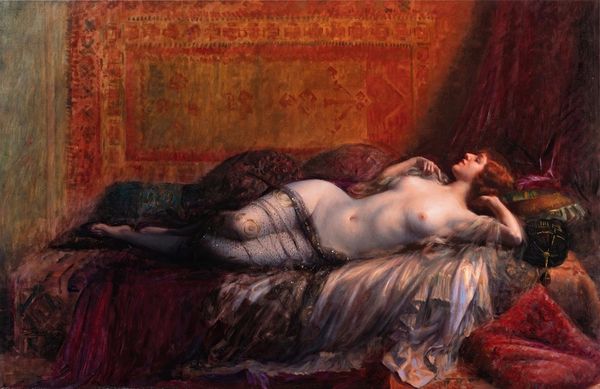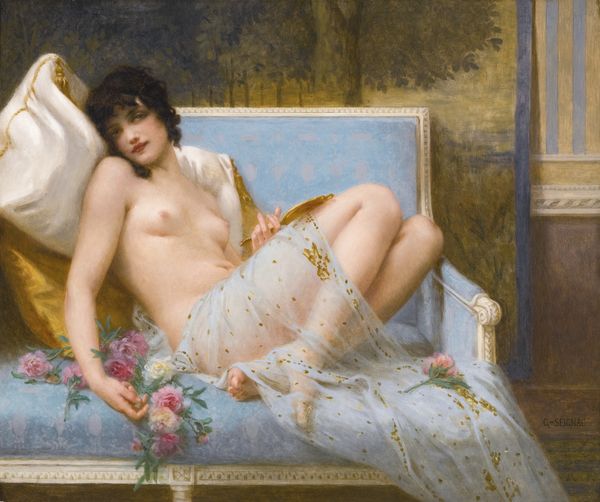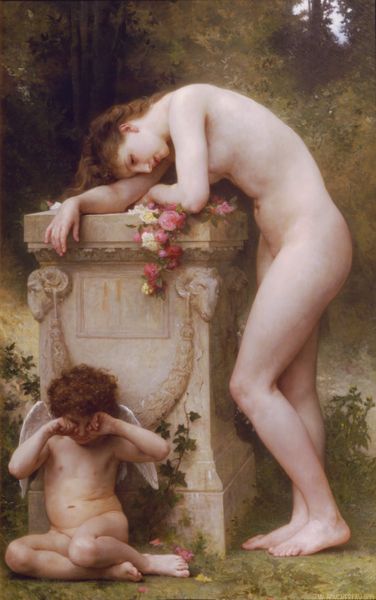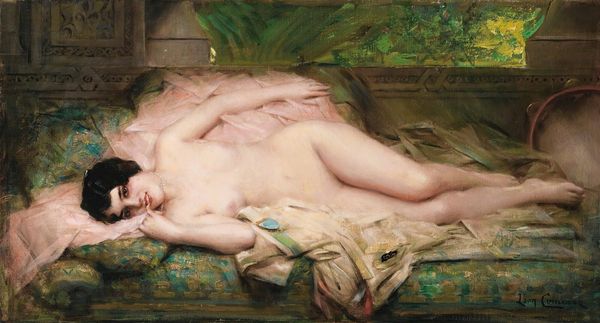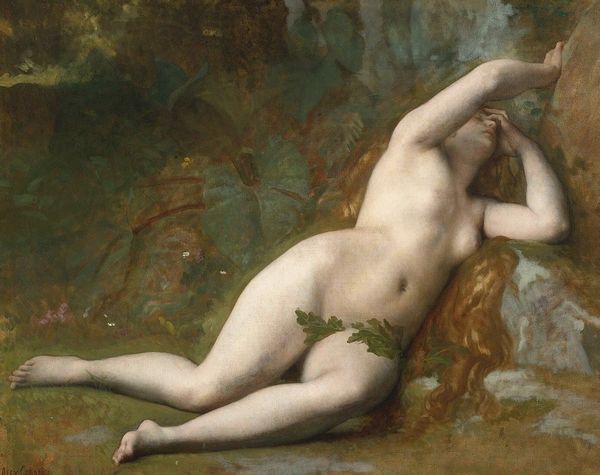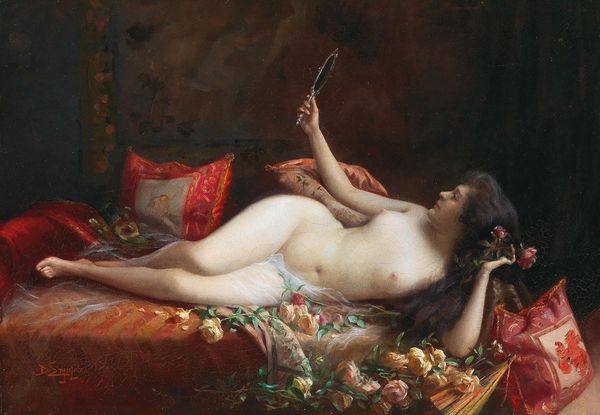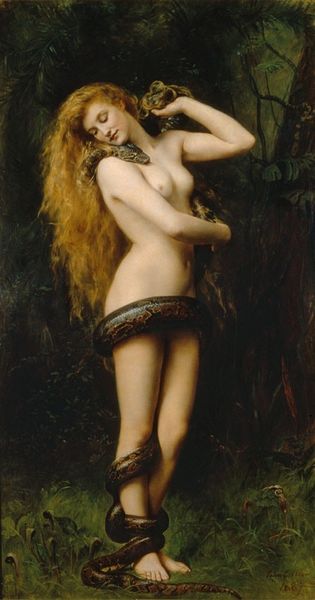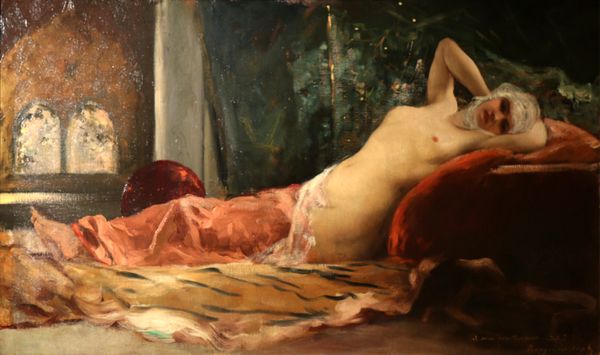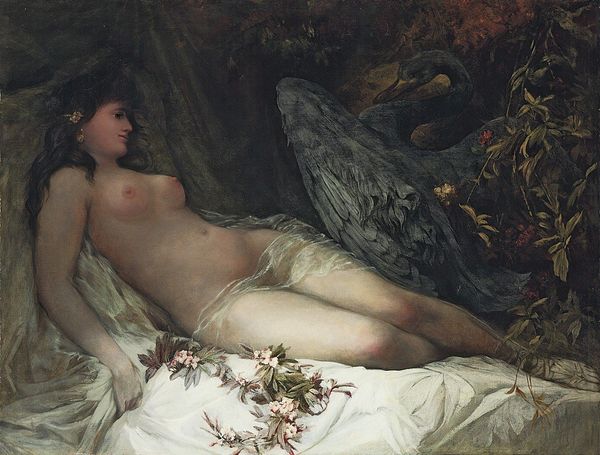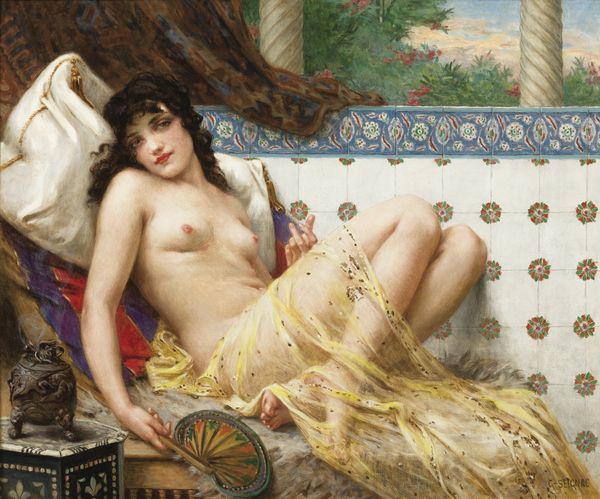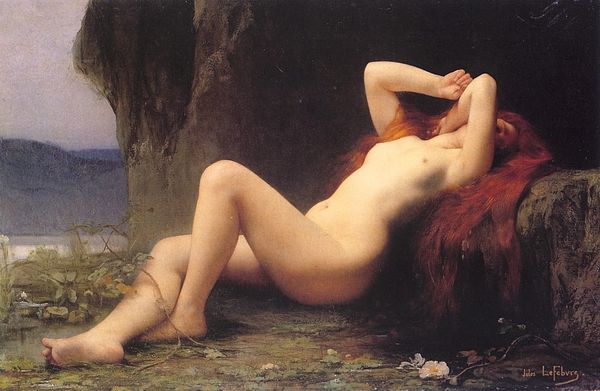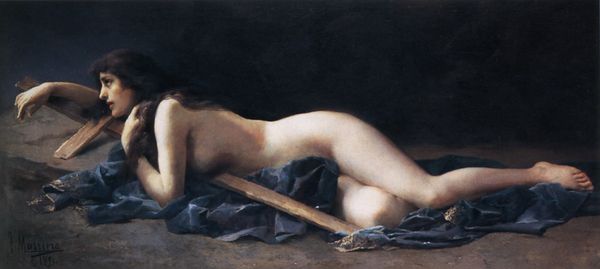
painting, oil-paint
#
painting
#
oil-paint
#
oil painting
#
genre-painting
#
academic-art
#
nude
Copyright: Public domain
Editor: Here we have Lawrence Alma-Tadema’s "In the Tepidarium" from 1881, crafted with oil paint. It exudes such an opulent, sensual atmosphere… it feels almost dreamlike. What visual symbolism leaps out at you in this work? Curator: The very title invites us to consider layers of meaning, doesn’t it? The tepidarium, the warm bath in ancient Roman bathhouses, wasn't merely about hygiene, but about social ritual, leisure, and even self-discovery. Notice how Alma-Tadema bathes everything in a gentle, diffused light. Editor: Yes, the light is almost tactile. And the woman, reclining there, seems completely at ease, almost lost in thought. Curator: Indeed. She holds a strigil, used to scrape oil and dirt from the skin, and a feathered fan. These aren't simply props, are they? They speak to a certain type of privileged life, one dedicated to cultivating the senses. Think about the colour symbolism too. Editor: How so? Curator: The reddish-orange flowers provide a vibrant counterpoint to the pale marble and skin tones. Consider also how Alma-Tadema is interested in blurring boundaries. Is this woman Roman? Is she modern? The feathered fan especially adds ambiguity; this item existed through centuries and across continents and, yet, the painting insists we recognise a luxurious world devoted to self-care. How does the painting make you feel, especially considering contemporary debates around similar themes today? Editor: It definitely brings into focus the lasting impact of ritual, memory and privilege through material culture and symbolism. It is intriguing how art continues to act as a time capsule! Curator: Precisely. And with Alma-Tadema's remarkable eye for detail, the painting compels us to decipher a familiar feeling of pleasure but from a different era, highlighting how humans relate to continuity and change.
Comments
No comments
Be the first to comment and join the conversation on the ultimate creative platform.
